
Sam Weller is a fictional character in The Pickwick Papers (1836), the first novel by Charles Dickens, and is the character that made Dickens famous. A humorous Cockney bootblack, Sam Weller first appeared in the tenth serialised episode. Previously the monthly parts of the book had been doing badly, selling only about 1,000 copies a month — but the humour of the character transformed the book into a publishing phenomenon, raising the sales by late autumn of 1837 to 40,000 a month. Such was the popularity of the character that William Thomas Moncrieff named his 1837 burletta Samuel Weller, or, The Pickwickians after the main comic character in the novel, rather than on Samuel Pickwick himself.

The Posthumous Papers of the Pickwick Club was Charles Dickens's first novel. Because of his success with Sketches by Boz published in 1836 Dickens was asked by the publisher Chapman & Hall to supply descriptions to explain a series of comic "cockney sporting plates" by illustrator Robert Seymour, and to connect them into a novel. The book became Britain's first real publishing phenomenon, with bootleg copies, theatrical performances, Sam Weller joke books, and other merchandise. Published in 19 issues over 20 months, the success of The Pickwick Papers popularised serialised fiction and cliffhanger endings.

Master Humphrey's Clock was a weekly periodical edited and written entirely by Charles Dickens and published from 4 April 1840 to 4 December 1841. It began with a frame story in which Master Humphrey tells about himself and his small circle of friends, and their penchant for telling stories. Several short stories were included, followed by the novels The Old Curiosity Shop and Barnaby Rudge. It is generally thought that Dickens originally intended The Old Curiosity Shop as a short story like the others that had appeared in Master Humphrey's Clock, but after a few chapters decided to extend it into a novel. Master Humphrey appears as the first-person narrator in the first three chapters of The Old Curiosity Shop but then disappears, stating, "And now that I have carried this history so far in my own character and introduced these personages to the reader, I shall for the convenience of the narrative detach myself from its further course, and leave those who have prominent and necessary parts in it to speak and act for themselves."
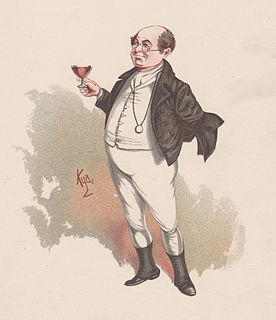
Samuel Pickwick is a fictional character and the main protagonist in The Pickwick Papers (1836), the first novel by author Charles Dickens. Pickwick is a retired successful businessman and is the Founder and Chairman of the Pickwick Club.

Pickwick is a musical with a book by Wolf Mankowitz, music by Cyril Ornadel, and lyrics by Leslie Bricusse. Based on the 1837 novel The Pickwick Papers by Charles Dickens, it is set in and around London and Rochester in 1828.
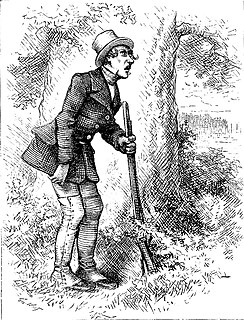
Nathaniel Winkle is a fictional character in Charles Dickens's first novel, The Pickwick Papers (1836).

The Pickwick Papers is a 1952 British black-and-white film based on the Charles Dickens’s 1837 novel of the same name. Both screenplay and direction were by Noel Langley.
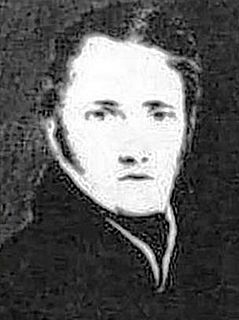
Robert Seymour was a British illustrator known for his illustrations for The Pickwick Papers by Charles Dickens and for his caricatures. He committed suicide after arguing with Dickens over the illustrations for Pickwick.

The Pickwick Papers is a twelve-part BBC adaptation of the 1837 novel The Pickwick Papers by Charles Dickens, first broadcast in 1985. It starred Nigel Stock, Alan Parnaby, Clive Swift and Patrick Malahide, with narration by Ray Brooks.
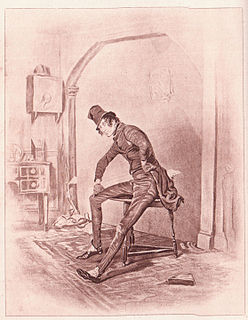
Alfred Jingle is a fictional character who appears in the 1837 novel The Pickwick Papers by Charles Dickens. He is a strolling actor and an engaging charlatan and trickster noted for his bizarre anecdotes and distinctive mangling of English syntax.

Charles Dickens's works are especially associated with London which is the setting for many of his novels. These works do not just use London as a backdrop but are about the city and its character.
The Adventures of Mr. Pickwick is a 1921 British silent comedy film directed by Thomas Bentley based on the 1837 novel The Pickwick Papers by Charles Dickens. As of August 2010, the film is missing from the BFI National Archive, and is listed as one of the British Film Institute's "75 Most Wanted" lost films.

Snodgrass Island is an island 2.5 nautical miles (4.6 km) long lying northeast of Pickwick Island, Pitt Islands, in the Biscoe Islands. Shown on an Argentine government chart of 1957. It was named by the United Kingdom Antarctic Place-Names Committee (UK-APC) in 1959 after the fictional character Augustus Snodgrass, a member of the Pickwick Club in Charles Dickens' The Pickwick Papers.
Pickwick is a British television musical made by the BBC in 1969 and based on the 1963 stage musical Pickwick, which in turn was based on the 1837 novel The Pickwick Papers written by Charles Dickens. It stars Harry Secombe as Samuel Pickwick and Roy Castle as Sam Weller.

The Pickwick Papers is a 1913 three-reel silent film based on the 1837 novel of the same name by Charles Dickens. The film was produced by Vitagraph Studios and features John Bunny in the title role of Samuel Pickwick.

Pickwick is an 1889 operetta in one act based on an episode in the 1836 novel The Pickwick Papers by Charles Dickens. The score was by Edward Solomon to lyrics by F. C. Burnand. It was one of three works written by the duo in collaboration, the others being Domestic Economy and The Tiger, both in 1890.
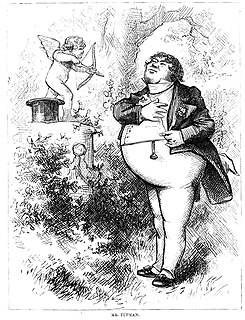
Tracy Tupman is a fictional character in Charles Dickens's first novel, The Pickwick Papers (1836). Although fat and middle-aged he considers himself a young lover and has an unfortunate amorous entanglement with the spinster Rachael Wardle.

Samuel Weller, or, The Pickwickians is an 1837 comedy in three acts adapted from Dickens's novel The Pickwick Papers by William Thomas Moncrieff. It was first performed at the Royal Strand Theatre in London on 17 July 1837.

Mrs Martha Bardell is a fictional character in The Pickwick Papers (1836), the first novel by Charles Dickens. A widow and the landlady of Mr Pickwick, a romantic misunderstanding between the two results in one of the most famous legal cases in English literature, Bardell v. Pickwick, leading to them both being incarcerated in the Fleet Prison for debt.



















